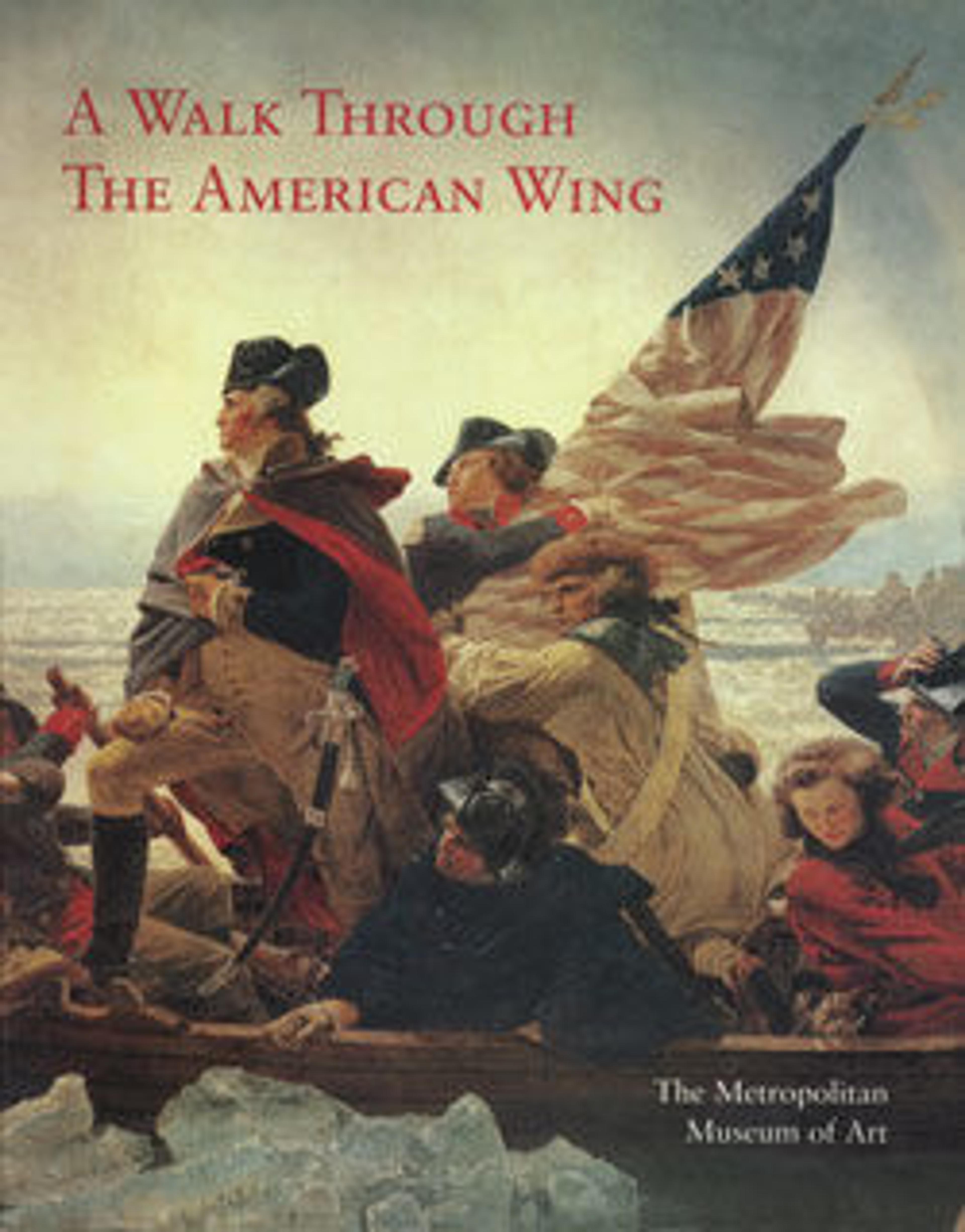Secretary-bookcase
Neoclassicism was the dominant style in American furniture for the first four decades of the nineteenth century. In contrast to the earlier Neoclassical designs characterized by light, delicate forms and geometric lines, this secretary, or writing desk, is associated with the later phase of Neoclassicism between 1815 and 1845. While by definition all Neoclassical furniture draws upon the past through the use of motifs and elements from antiquity such as acanthus leaves, animal-paw feet, and palmettes, late Neoclassical furniture is distinguished by its bold forms and often monumental character.
Here the ebonized mahogany, the painted and gilded fretwork in imitation of brass inlay, the naturalistic stenciling of fruits and flowers on the rounded front molding and cornice, the columns with carved and gilded capitals, and the massive paw feet below burnish-gilded cornucopia brackets, all combine to create one of the greatest expressions of American furniture in the late Neoclassical style. Aside from its obvious decorative appeal, this piece served a practical function as a writing desk: the front molding pulls out to reveal a writing surface flanked by compartments for ink, and the drawers and shelves above would have provided storage space for papers, letters, and books. While this secretary had previously been attributed to the New York cabinetmakers Joseph Meeks and Sons, the recent discovery of a signed secretary-bookcase of very similar design by Robert Fishcer (1824-1837) casts doubt upon this certain attribution
Here the ebonized mahogany, the painted and gilded fretwork in imitation of brass inlay, the naturalistic stenciling of fruits and flowers on the rounded front molding and cornice, the columns with carved and gilded capitals, and the massive paw feet below burnish-gilded cornucopia brackets, all combine to create one of the greatest expressions of American furniture in the late Neoclassical style. Aside from its obvious decorative appeal, this piece served a practical function as a writing desk: the front molding pulls out to reveal a writing surface flanked by compartments for ink, and the drawers and shelves above would have provided storage space for papers, letters, and books. While this secretary had previously been attributed to the New York cabinetmakers Joseph Meeks and Sons, the recent discovery of a signed secretary-bookcase of very similar design by Robert Fishcer (1824-1837) casts doubt upon this certain attribution
Artwork Details
- Title: Secretary-bookcase
- Maker: Possibly by Robert Fisher (American, active 1824–37)
- Date: 1825–35
- Geography: Made in New York, New York, United States
- Culture: American
- Medium: Ebonized mahogany, mahogany, mahogany veneer, gilding, bronzing, stamped brass ornaments, and glass (secondary woods: pine, poplar, cherry)
- Dimensions: 102 x 55 3/4 x 28 1/8 in. (259.1 x 141.6 x 71.4 cm)
- Credit Line: Gift of Francis Hartman Markoe, 1960
- Object Number: 60.29.1a, b
- Curatorial Department: The American Wing
More Artwork
Research Resources
The Met provides unparalleled resources for research and welcomes an international community of students and scholars. The Met's Open Access API is where creators and researchers can connect to the The Met collection. Open Access data and public domain images are available for unrestricted commercial and noncommercial use without permission or fee.
To request images under copyright and other restrictions, please use this Image Request form.
Feedback
We continue to research and examine historical and cultural context for objects in The Met collection. If you have comments or questions about this object record, please contact us using the form below. The Museum looks forward to receiving your comments.
